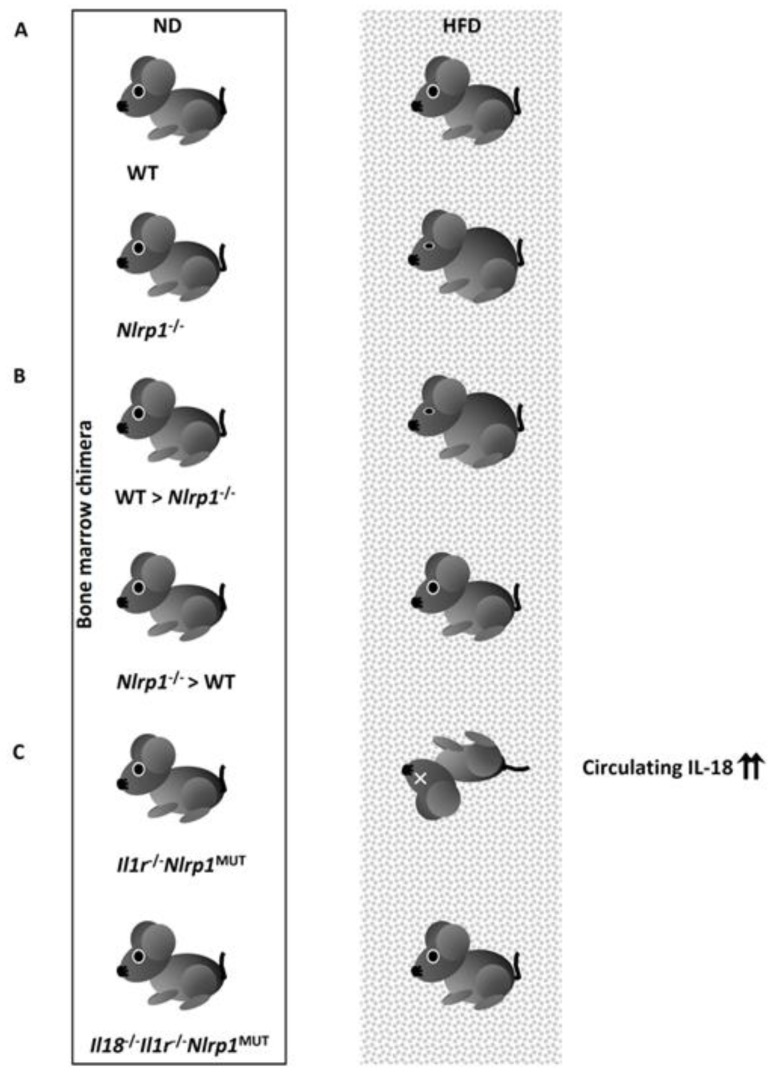Figure 4.
Involvement of the NLRP1 inflammasome in non-hematopoietic cells on metabolic homeostasis. (A) Requirement of NLRP1 for metabolic homeostasis: Nlrp1−/− mice spontaneously develop obesity and related metabolic syndromes when fed a normal diet (ND) that does not induce obesity in wild type (WT) mice. Nlrp1−/− mice fed a high-fat diet (HFD) had a more severe illness compared with WT mice. (B) IL-18 is released after activation of NLRP1 in non-hematopoietic cells. Nlrp1−/− mice reconstituted with WT bone marrow cells (Nlrp1−/− > WT) showed a phenotype similar to Nlrp1−/− mice. In contrast, WT mice reconstituted with Nlrp1−/− bone marrow cells (WT > Nlrp1−/−) exhibited a phenotype comparable with WT mice. (C) The protective role of IL-18 against cachexia. Il1r−/−Nlrp1MUT mice harboring a mutant gene from human patients with familial Mediterranean fever but lacking the IL-1R gene have an almost intact phenotype when fed a ND. However, when fed an HFD, Il1r−/−Nlrp1MUT mice suffered from fatal illness with a marked increase in circulating IL-18 levels. By contrast, Il18−/−Il1r−/−Nlrp1MUT mice were resistant to HFD.

